Japan, China, and Korea Share in the Pain of Disaster-Hit Communities through the International Theater Project "SHUGEN -Celebration/Expression-"
Koji Hasegawa
Artistic director of performing arts at the Aomori Museum of Art, writer and director of "SHUGEN -Celebration/Expression-"
An international theater production titled "SHUGEN -Celebration/Expression-" themed on the Great East Japan Earthquake of 2011, premiered in the fall of 2013 and concluded in January 2014.
Co-presented by the Japan Foundation and the Aomori Museum of Art, the piece brought together a diverse group of theater professionals from Japan, China, and Korea, and toured eight cities: Aomori, Daejeon, Seoul, Jeonju, Shanghai, Beijing, Sendai, and Tokyo. In the following article, the director and writer Koji Hasegawa looks back on the project and discusses his thoughts on "SHUGEN."
The "slash" signifies the scar of the present as well as the past
The slash mark in the play's title, "Celebration/Expression" represents a scar, one that was made in the past and one that continues to cause pain to this day between Japan and China, and between Japan and Korea.
As standard practice, I write a series of short stories before working on a play. For this project, I produced a story written from the Chinese point of view, followed by one from the Korean perspective, then another from the Japanese one. I also wrote a story centered around a dancer, a camera man, and on and on. I kept writing these short stories, told from as many angles as imaginable, until the narrative clicked and started to weave itself. Even then, the "slash" did not go away. 。
The impact of the heavy concentration of modern theater culture in a single area
Eventually, I switched from writing short stories to writing the play, and around the same time the casting process began.
While holding auditions in various cities, from Seoul, Daejeon, and Jeonju to Beijing, Shanghai and Chengdu, I conducted research on modern theater of Korea and China. And the six-city journey offered a new perspective, that of urban versus rural.
Modern theater culture in both Korea and China is heavily concentrated in the capital, with the exception of Shanghai. In other words, everything from actors, theater groups, and production companies to staff and critics is almost entirely based in Seoul or Beijing.
The same is true in Japan, with over 90% of the 4,000 or so theater groups clustered in the Tokyo metropolitan area. The remaining 10% are scattered across the country, meaning there are but five or six regional theater groups per prefecture. One can easily count on two hands the number of the regional theater groups that regularly perform outside of their locality in all of Japan.
Things aren't much different in Korea. Even a city like Daejeon, which boasts a relatively vibrant theater scene, is losing its top talents as these human resources move to Seoul. Regionally-based theater groups are rare. The imbalance is even more pronounced in China, where most, if not all, theater actors, staff, playwrights, and directors have been trained either at the Central Academy of Drama, based in Beijing, or the Shanghai Theatre Academy.
The inevitable drawbacks to this excessive concentration of theater professionals and resources in one or two specific areas are the difficulty in ensuring diversity and the consumption of theater as a commercial commodity.

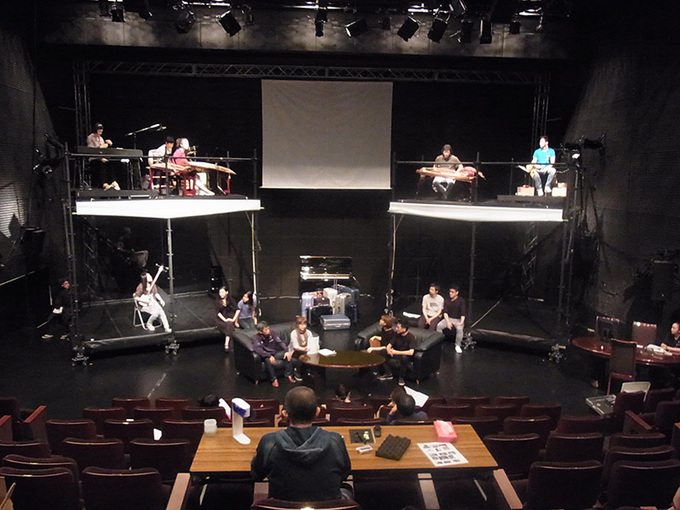
The entire cast and artists of "SHUGEN" from Japan, China, and Korea assembled in Aomori for the three-country, eight-city tour kick-off
The project kicks off in Aomori
Two years and eight months. That is the length of time from when the "SHUGEN" preparation was launched to the day of the final performance. First, a good deal of time was spent in Aomori to develop and refine the project's concept, based on which the play was written. Then actors, dancers, musicians, and photographers from Korea and China joined the undertaking.
The starting point for all participating artists was here at the Aomori Museum of Art. By coming here, they invariably went through the distinct experience that Aomori offers, namely the "true darkness" and the slow passage of time. To be exposed to the gradation from "dark" to "light," and to put oneself in a different flow of time are both critical experiences for any performing artist, and this unique experience in Aomori became an inherent part of us throughout the tour, forming something that resembles a core.
And that core can be best described by the word "respect."
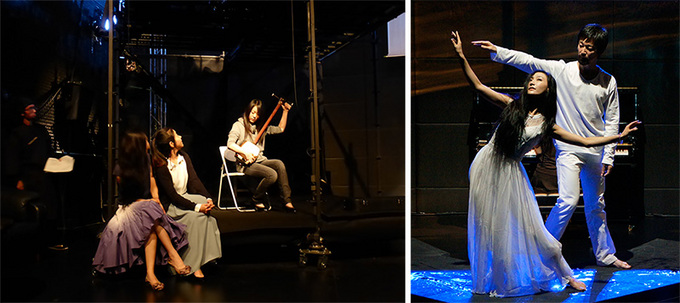
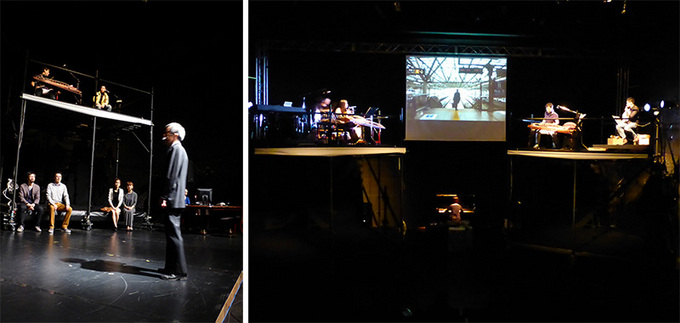
Performance at Aomori Museum of Art
A sense of "respect" that was developed in a pure space and time
Life in large cities is marked by endless noise and "light" in which complete "darkness" never appears. Darkness is what gives meaning to light, just as total silence is what gives meaning to a sound. The effect of the distinct experience available only in Aomori manifested itself in the way the artists showed respect to one another. What this means is that the experience of finding ourselves in such a pure time and space freed us of the views and attitudes we had come to embrace over the years and gave us a clean slate.
"SHUGEN" is a production consisting of music, dance, acting, and photography, but any of them is never dominant over another. The music component, for example, is an independent element of the performance and does not play a supporting role in the service of acting, just as photography is not intended to support music. All components are equal and balanced, competing each other only for beauty. Needless to say, it is led from the artists' sense of mutual "respect."
The main theme: to share the experience of grief among Japan, China, and Korea
Tohoku is seen as a close yet distant region for Japanese people. The relations between Japan, China, and Korea, are also close and distant.
"SHUGEN" is set in a hotel that stands on the coast overlooking the Pacific Ocean, in the Tohoku Region, where a Japanese groom and a Korean bride are about to get married. Their family, relatives, and friends, including some from China, have gathered to celebrate. On the day before the wedding, Tohoku is struck by a huge earthquake followed by a massive tsunami. Only two people survive: a Chinese and a Japanese, who is from Fukushima. A year and eight months after the disaster, the two survivors visit the hotel that is under reconstruction.
In the opening, a group of the deceased--Chinese, Korean, and Japanese--enters the stage with music played by Ensemble SINAWI, a traditional Korean music group. The Chinese survivor joins them, and the living and the dead engage in a conversation.
The scene of the living and the lifeless talking to each other without an interpreter was intended to show that "SHUGEN" was created with an awareness of history. Awareness of history, simply put, comes from learning about and taking deep consideration on the actions of one's grandfather and great grandfather, and then being prepared to use that knowledge to help guide future dialogue.
The introduction of the Chinese, Korean, or Japanese culture was not the point of the show. Rather, the primary aim was to reveal what sort of collaboration was possible among the artists of the three countries so as to provide an answer to the question: Can the three neighbors acknowledge and share the experience of grief as their own?
Proof that a spirit of mutual respect can be fostered
A total of 26 performances of "SHUGEN" were given in three cities in Korea, three in Japan and two in China. At each venue, our team worked with the Korean or Chinese staff to arrange the set and the props that had been prepared locally. The staff from different countries had different opinions about every detail, from the wiring of the lights to the selection of the lens. We worked out the differences one by one.
The single largest "river" that lay between us was the language barrier, and the performers crossed the "river" ever so gravely, discreetly, and with much care in this project.
It's easy to talk about the hardships and easier still to blame the hardships on someone else. Respect should be at the root of any collaboration. We were fortunate in this project in being able to maintain the spirit of mutual respect from start to finish.
Looking back at the whole project, I feel I may have been a little too prosaic. Be that as it may, I cannot assert this enough: What is most lacking in the relations between China, Korea, and Japan at the moment is a sense of respect for each other. "SHUGEN" demonstrated that the three countries can indeed work together in mutual respect.
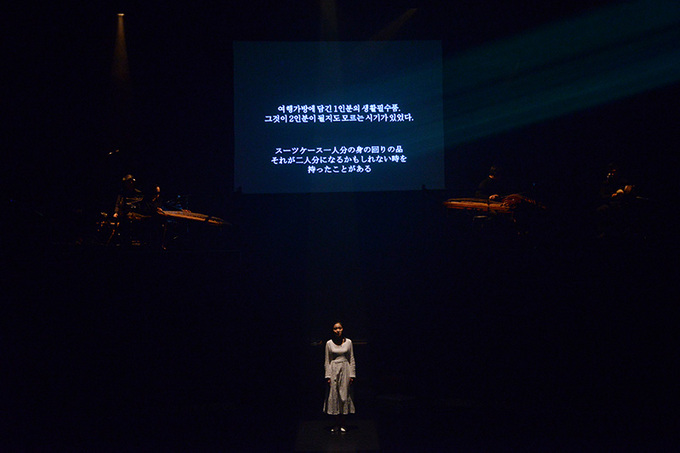

Performance at Daehangno Arts Theater (Seoul)
(C)2013SPAF_Sang-Hoon Ok
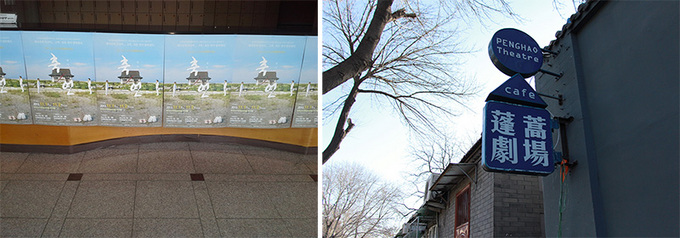
(Left) Sori Arts Center of Jeollabuk-do (Jeonju), (Right) Penghao Theatre
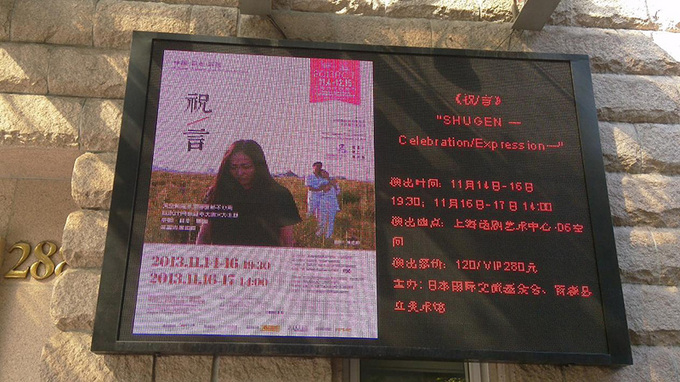
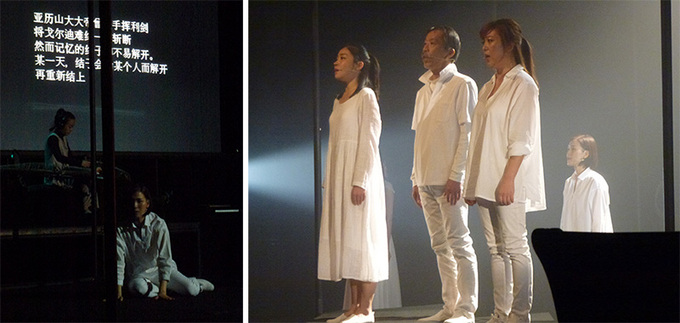
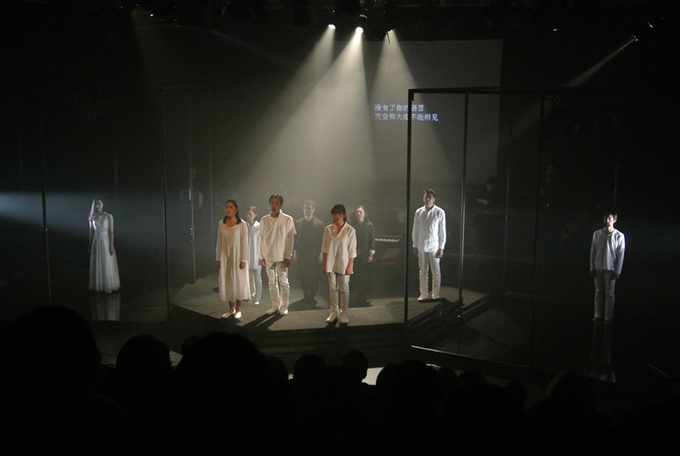
Performance at Shanghai Dramatic Arts Center
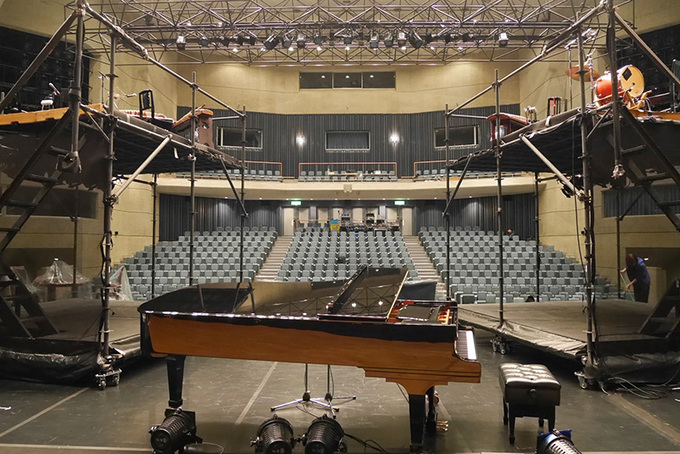


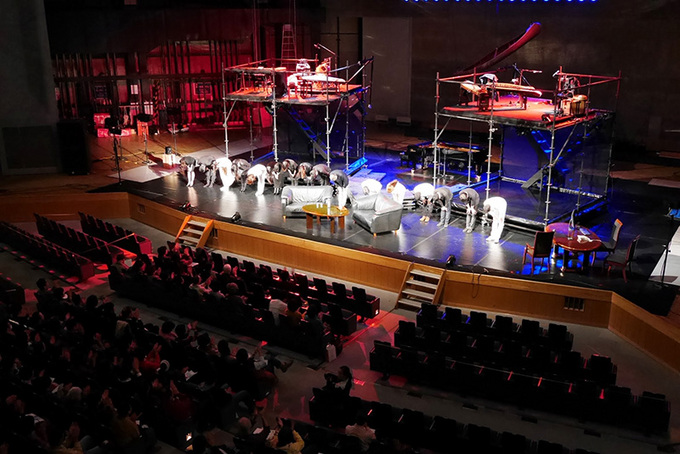
Performance at Hitachi Systems Hall Sendai (Sendai City Youth Cultural Center)
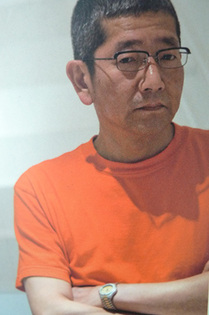 Koji Hasegawa
Koji Hasegawa
Playwright and director. Born in Aomori in 1956, Hasegawa founded in 1978 the Hirosaki Theater Company, writing and directing all of its productions. His work has been recognized with numerous awards including the 1990 Aomori Prefecture Performing Arts Incentive Award, the First Japan Playwrights Association's Outstanding New Playwright Award in 1996, and the 2001 Ministry of Education, Culture, Sports, Science and Technology's regional cultural merit award.
Hirosaki Theater Company performs widely across Japan and in overseas countries such as Germany. Also, the Company has collaborated with international theater professionals, including those from Thailand and the Philippines. Many of Hasegawa's works have been translated and staged in German and French.
Since taking the post of general director of performing arts at the Aomori Museum of Art in 2006, Hasegawa has produced a number of works centering on Aomori, such as the theater piece Tsugaru and dance piece Dance Aleko Aomori and organized performances abroad, primarily in Asia. In 2013 he wrote and directed "SHUGEN -Celebration/Expression-," an international co-production theater project featuring actors, dancers, and players of traditional musical instruments from Japan, China, and Korea. The show was staged in eight theaters across the three countries.
In addition to dramas, Hasegawa recently wrote his second novel to be adapted into a film directed by Nobuhiko Obayashi, Nononanananoka, set in Ashibetsu city, Hokkaido. His books include Gikyokushu hirosakigekijo no futatsunobasho (Koji Hasegawa's Plays: The Two Worlds of Hirosaki Theatre, Ohta Publishing Co.), Hirosaki gekijo no sanjunen (The Thirty Years of Hirosaki Theater Company, Jurousha), and Samayoeru engekijin (The Wandering Theater Artist, Mumyosha).
Back Issues
- 2025.6. 9 Creating a World Tog…
- 2024.10.25 My Life in Japan, Li…
- 2024.5.24 The 50th Japan Found…
- 2024.5.24 The 50th Japan Found…
- 2024.5. 2 People-to-People Exc…
- 2024.5. 2 People-to-People Exc…
- 2023.12. 7 Movie Theaters aroun…
- 2023.6.16 The 49th Japan Found…
- 2023.4.24 The 49th Japan Found…
- 2022.12.27 Living Together with…

